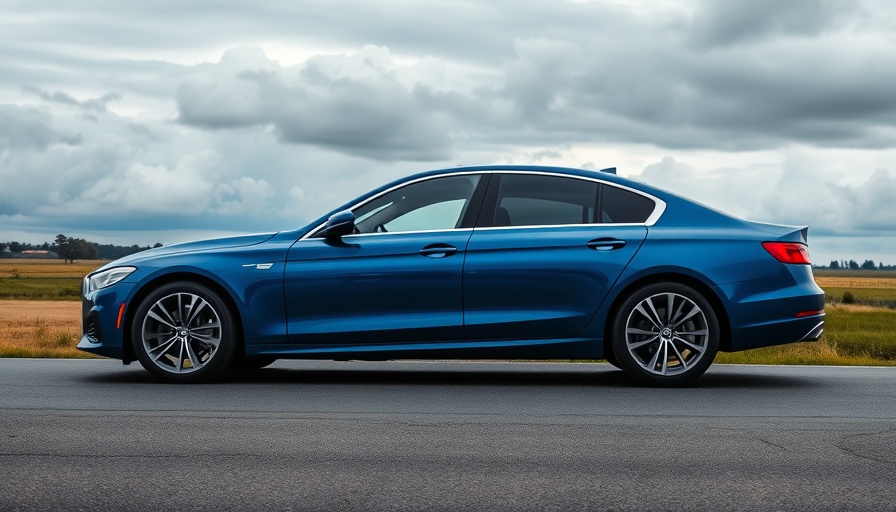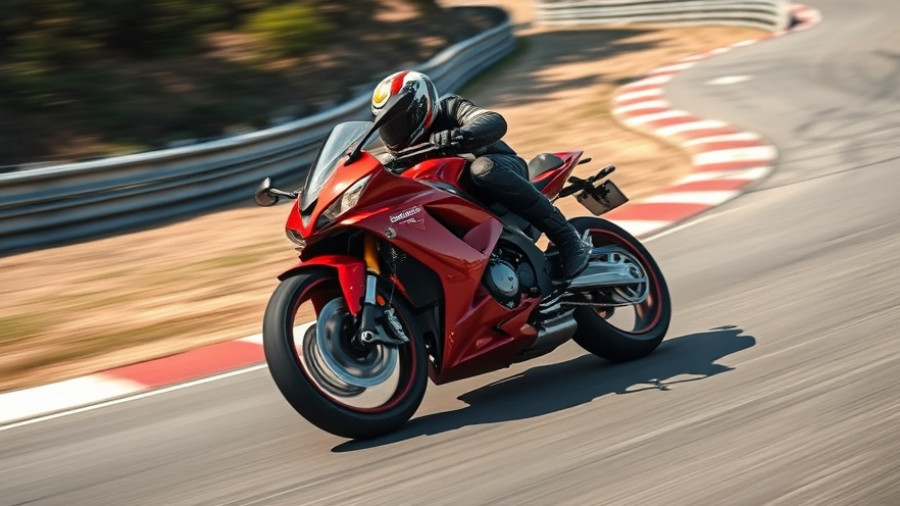
The Economic Implications of Reduced EU Tariffs on Automakers
President Trump's recent decision to cut tariffs on imported European automobiles from 25% to 15% marks a significant shift for the automotive industry, especially benefiting luxury manufacturers like BMW and Mercedes-Benz. This deal was forged during a high-level meeting with European Commission President Ursula von der Leyen and aims to revitalize the strained economic ties between the U.S. and the EU.
For BMW and Mercedes, the impending price spike on American consumers can now be mitigated, helping them maintain their competitive edge against rivals such as Lexus and Acura, who had previously received favorable treatment from earlier trade agreements with the U.S. However, while these two giants bask in the prospects of sales growth, Volkswagen seems to bear the brunt of the consequences.
A Mixed Blessing for the Automotive Sector
Despite the positive outlook for BMW and Mercedes, Volkswagen and Porsche are navigating troubling waters that may not be easily remedied. Volkswagen reported a one-third drop in profits during the second quarter, revealing the stresses of the current tariff structure. Porsche's management, including CEO Oliver Blume, has openly admitted that their business model is struggling to adapt under the existing global economic pressures.
The reality for VW is stark: even with tariff reductions, the automotive landscape remains tumultuous. The 15% tariff is a step down but still a burden on companies heavily reliant on exports. As Wolfgang Niedermark from the Federation of German Industries (BDI) noted, the reduced tariff carries “immense negative effects” for Germany's industrial sector.
Impacts on Business Models and Strategies
The new tariff framework obligates automakers to reassess their business strategies and financial forecasting. The favorable conditions for BMW and Mercedes may encourage them to reconsider their pricing strategies or enhance production in North America to offset tariffs further. Meanwhile, VW must work tirelessly to revert its recent financial setbacks, facing a redesign of its operations to ensure sustainability in a competitive market.
Industry experts note that navigating these changes will require agility, innovation, and perhaps even collaboration among manufacturers to weather ongoing uncertainty in trade policies.
Beyond Tariffs: Insights into the Global Automobile Market
The automotive industry is a cornerstone of global economics, ranking among the largest and most crucial sectors. The latest tariff developments could potentially reshape market dynamics, with European and American manufacturers seeking stronger footholds in each other's territories. The question arises: How will these strategic adjustments play into the larger context of a market where the biggest car companies continue to expand?
Consumer preferences are shifting, which adds another layer of complexity. With rising demand for electric vehicles and sustainability initiatives, the biggest automobile industry in the world must evolve swiftly. Market leaders, including the largest auto producers, are under pressure to innovate and respond to changing regulations that favor green technology. This landscape presents a ripe opportunity for brands willing to pivot.
The Road Ahead: Navigating Uncertainty in Trade and Technology
While Trump's tariff reduction offers a glimmer of hope for some automakers, it raises significant challenges for others, illustrating the complexity of international trade. Economists argue that this move may not end the volatility; rather, it can signify a 'new normal' where brands must factor tariff considerations as they strategize their market presence.
As automakers recalibrate, those who adapt effectively to these challenges are likely to rise to the top of the biggest car industry ranks, while others left unprepared may struggle. The evolution of trade agreements has embedded unpredictability into the vehicle market, urging brands to innovate at a pace quicker than ever before.
Conclusion: Embracing Change in the Automotive Landscape
The shifting dynamics of the automotive industry, driven by new tariff agreements and consumer demands, require careful monitoring. For enthusiasts and stakeholders alike, understanding these changes can spell the difference between success and failure in car ownership, investment, or sales practices.
As the market transforms, the implications of these tariffs will be felt across various sectors. Automakers, consumers, and investors should stay informed and prepared for adaptability in this rapidly evolving landscape.
 Add Row
Add Row  Add
Add 




Write A Comment